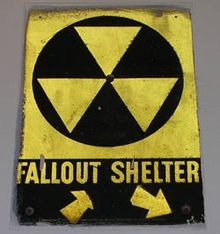

Sharon Ghamari-Tabrizi’s “The Worlds of Herman Kahn” (Harvard $26.95) is an attempt to look at Kahn as a cultural phenomenon. Reporters referred to him as “a roly-poly, second-strike Santa Claus” and “a thermonuclear Zero Mostel.” He is supposed to have had the highest I.Q. Observers were charmed or repelled, sometimes charmed and repelled. He was a jocular, gregarious giant who chattered on about fallout shelters, megaton bombs, and the incineration of millions. He was a marathon spielmeister, whose preferred format was the twelve-hour lecture, split into three parts over two days, with no text but with plenty of charts and slides. In his day, Kahn was the subject of many magazine stories, and most of them found it important to mention his girth-he was built, one journalist recorded, “like a prize-winning pear”-and his volubility. ( rand stands for Research ANd Development.) rand was a line item in the Air Force budget its offices were on a beach in Santa Monica.

One of the things it wanted was a research arm, and rand was the result. An independent Department of the Air Force was created in 1947 the nation’s nuclear arsenal was put under its command and the Air Force displaced the Army as the prima donna of national defense. In 1945, when the United States dropped atomic bombs nicknamed Little Boy and Fat Man on Japan, the Air Force was still a branch of the Army. Kahn was a creature of the rand Corporation, and rand was a creature of the Air Force.

Exhibit A in the case against them is a book by Kahn, published in 1960, “On Thermonuclear War.” The type of war they contemplated was, of course, never waged, but whether this was because of their work or in spite of it has always been a matter of dispute. Their training was in physics, engineering, political science, mathematics, and logic, and they worked with the latest in assessment technologies: operational research, computer science, systems analysis, and game theory. The collective combat experience of these men was close to nil their diplomatic experience was smaller. Herman Kahn was the heavyweight of the Megadeath Intellectuals, the men who, in the early years of the Cold War, made it their business to think about the unthinkable, and to design the game plan for nuclear war-how to prevent it, or, if it could not be prevented, how to win it, or, if it could not be won, how to survive it.


 0 kommentar(er)
0 kommentar(er)
